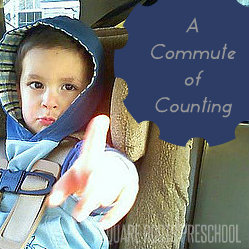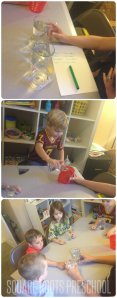Most printed letters are composed of a combination of clockwise circles and straight vertical lines. Although your child’s scribbles may look like nothing, they show his emerging writing skills. There are activities you can do anywhere to help your child develop these strokes.
Have your child make clockwise circles and up-and-down lines using his fingers. He can draw in the air, on the water in the bathtub, on your arm, in the sand, or on a table. It can also be fun to make these strokes in flour, salt, or sugar. You can also add a small amount of liquid or sand in a zippered plastic bag and let your child make the impressions on the outside of the bag.
You can also ask you child to use his feet or toes to create the circles and lines. Or you can ask him to draw the shapes in the air and ask you to guess which shape he’s drawing.
Once your child starts forming letters, you can do the same activities with the letter formations!
Writing photo source: wonderfulyearskindergarten.blogspot.com




